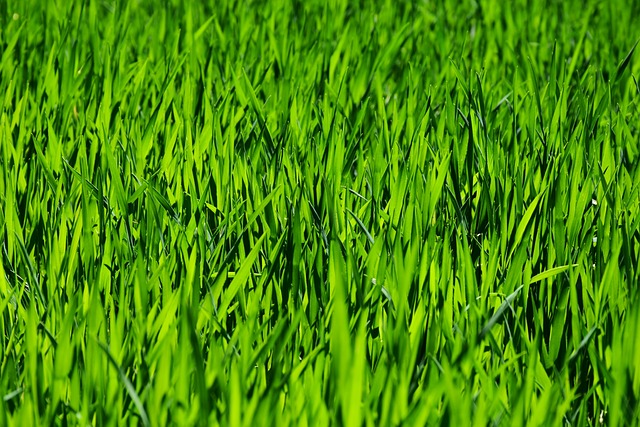Lawn care and landscaping are essential for creating visually appealing and environmentally healthy outdoor spaces. A successful approach involves understanding local climate and soil conditions to tailor a lawn care routine that promotes robust root growth, deters weeds, and maintains vibrant grass. Regular aeration, measured fertilization, and water conservation practices, particularly deep infrequent irrigation for promoting deeper root systems, are key. Diversifying plant species and ground covers can enhance ecosystem resilience naturally. Professional landscaping design requires strategic planning that considers the terrain's natural contours, sunlight, wind patterns, and climate suitability of plants, along with the thoughtful integration of hardscape features. Collaboration with homeowners to fulfill their vision and maintain functionality is crucial, as is ongoing maintenance to preserve beauty and function. Lawn Care and Landscaping services are a continuous investment that underscores sustainable living and showcases the harmonious blend of form and function in outdoor spaces.
Embark on a journey through the lush realm of landscaping design, where the art of lawn care meets strategic planning. This exploration delves into the essential principles that underpin a thriving yard, offering insights into harmonizing aesthetics and functionality in your outdoor spaces. As we transition from concept to creation, learn the practical steps for implementing your landscape vision effectively, enhancing both the beauty and utility of your environment. Join us as we navigate the intricate dance between nature’s canvas and human design, ensuring every blade of grass and tree placement serves a purpose. Keywords like ‘Lawn Care’ and ‘Landscaping’ will guide you through this transformative process, ensuring your outdoor space is nothing short of breathtaking.
- Essential Principles of Effective Lawn Care for a Thriving Yard
- Strategic Planning in Landscaping Design: Balancing Aesthetics and Functionality
- Implementation Techniques: Bringing Your Landscape Vision to Life with Practical Steps
Essential Principles of Effective Lawn Care for a Thriving Yard

Effective lawn care is a cornerstone of landscaping design, fostering a thriving yard that reflects both aesthetics and environmental health. A robust lawn care regimen begins with understanding local climate conditions and soil types, tailoring practices to ensure optimal grass growth. Regular mowing at the correct height, which typically varies by grass species, allows for healthy root development and reduces the risk of weeds taking over. Aeration, a practice that creates soil pathways, alleviates soil compaction, which can impede water and nutrient uptake by grass roots.
To maintain a vibrant lawn, consistent fertilization with appropriate nutrients is essential. This not only enhances color and texture but also strengthens the grass against pests and diseases. Watering strategies should be efficient to prevent waste; deep, infrequent watering encourages deeper root growth compared to shallow, frequent irrigation. Additionally, integrating diverse plant species and ground covers can create a resilient landscape that competes with weeds and adds year-round interest. Regular inspection for pests, diseases, and soil compaction, followed by timely interventions, ensures the lawn remains lush and healthy throughout the seasons. Implementing these principles of lawn care as part of your landscaping strategy will result in a yard that is both beautiful and sustainable.
Strategic Planning in Landscaping Design: Balancing Aesthetics and Functionality

In the realm of landscaping design, strategic planning plays a pivotal role in crafting outdoor spaces that are both visually appealing and functional. Lawn Care and Landscaping professionals understand that the harmonious blend of aesthetics and functionality is key to creating an enduring and beautiful landscape. This balance is achieved through meticulous site analysis, which takes into account the natural contours of the land, sunlight exposure, wind patterns, and existing flora and fauna. The design process involves selecting plant species that not only enhance the visual appeal of the property but also thrive in the local climate and soil conditions. Irrigation systems are integrated to support the health of the plants while minimizing water usage. Hardscape elements like walkways, patios, and water features are placed to complement the natural flow of movement and to serve as functional components that enhance the usability of the space.
Furthermore, a successful landscaping design also considers the needs and preferences of the homeowners. Lawn Care and Landscaping experts engage with clients to understand their vision for their outdoor space, ensuring that the final design aligns with their lifestyle, budget, and maintenance capabilities. The implementation phase demands precision and attention to detail, with each element carefully positioned to contribute to the overall harmony and balance of the landscape. Regular maintenance and care are integral to maintaining the intended aesthetic and functionality, making Lawn Care and Landscaping services an ongoing commitment to preserve the beauty and usability of a well-designed outdoor space. By integrating both form and function from the outset, landscapes are not only beautiful but also serve as sustainable and livable extensions of the home.
Implementation Techniques: Bringing Your Landscape Vision to Life with Practical Steps

Embarking on a landscaping project transforms your outdoor space into a harmonious blend of form and function. To actualize this vision, meticulous planning complemented by strategic implementation is paramount. The initial step involves a comprehensive site analysis, considering aspects like sunlight exposure, soil quality, and topography to optimize lawn care and landscaping design choices. This phase ensures that each element of the landscape—from the layout of flower beds to the placement of hardscapes—is positioned to thrive and contribute to an aesthetically pleasing environment.
Once the plan is in place, execution becomes the focus. Effective implementation begins with preparing the ground; this includes soil amendments, grading for drainage, and establishing a robust irrigation system to support lush, vibrant plant life. Plant selection should align with your region’s climate and the specific needs of your landscape. Integrating native plants can enhance biodiversity while reducing maintenance demands. As you progress with lawn care and landscaping, remember to approach each task with attention to detail, from laying sod or seeding a new lawn to installing pathways and outdoor structures. Regular maintenance, including consistent mowing, pruning, and weeding, will nurture your landscape, ensuring it evolves as intended over time.
Landscaping design and implementation serve as a canvas for transforming outdoor spaces into vibrant extensions of one’s home. By adhering to essential principles of effective lawn care and strategic planning, homeowners can cultivate thriving yards that are both visually pleasing and functional. Implementation techniques, when executed with precision, bring these visions to fruition, resulting in landscapes that are not only aesthetically satisfying but also sustainable over time. Lawn Care and Landscaping are integral practices for achieving this harmony, ensuring that your outdoor space remains a source of beauty and tranquility throughout the seasons. With careful planning and attentive maintenance, any garden can become an oasis of natural elegance, enhancing the quality of life and providing a serene retreat from daily stresses.
